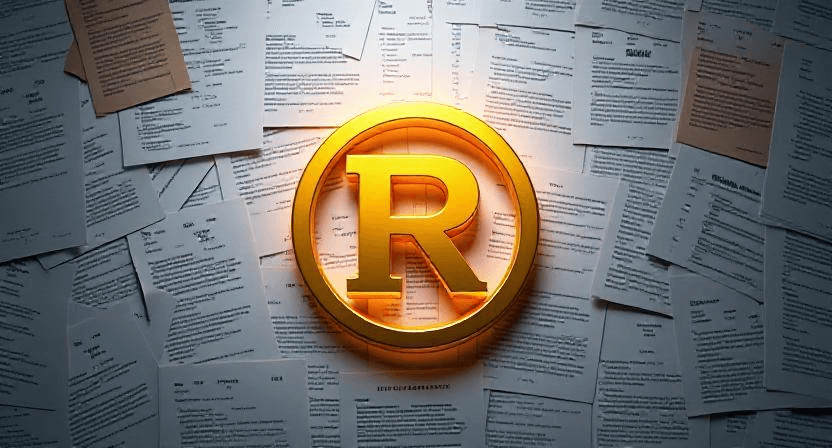How OEM Enterprises Can Use U.S. Trademarks to Achieve “Export-to-Domestic” and “Brand-Through-Shell” Strategies
 Introduction
Introduction
In the global supply chain, Chinese OEM (Original Equipment Manufacturer) enterprises have long played the role of the “world’s factory,” producing goods for international brands. However, as domestic market competition intensifies and the global trade environment evolves, many OEM companies are seeking transformation—moving beyond pure contract manufacturing toward independent brand development. Registering U.S. trademarks and leveraging them for either “export-to-domestic” or “brand-through-shell” strategies has emerged as a feasible path.
I. Why Choose U.S. Trademarks?
U.S. trademarks (registered with the USPTO) offer several advantages, making them valuable tools for OEM enterprises seeking brand upgrades:
-
High international recognition: As the world’s largest consumer market, the U.S. enjoys global credibility, and its trademarks are well-regarded even in China.
-
Strong legal protection: The U.S. has a well-established intellectual property system that effectively deters counterfeiting and infringement.
-
Brand premium effect: Consumers often associate “American brands” with higher quality, enabling better product pricing.
-
Capital market benefits: U.S. trademarks can help attract investors and pave the way for future overseas listings, such as on NASDAQ.
II. How OEM Enterprises Use U.S. Trademarks to Achieve “Export-to-Domestic”
Many OEMs produce goods in China for foreign brands, which are then sold back into China as imported products—this is the “export-to-domestic” model. With U.S. trademarks, companies can implement this strategy with greater autonomy:
-
Register a U.S. trademark to build a “pseudo-foreign brand”
-
Apply for the trademark under a U.S. company (e.g., a Delaware-registered offshore entity).
-
Create brand names and logos that appeal to Western aesthetics, reinforcing an “international brand” image.
-
When selling through domestic e-commerce platforms (Tmall, JD.com) or offline channels, emphasize the “American brand” and “imported” narrative to justify higher pricing.
Example:
A Guangdong-based home appliance OEM previously manufactured for a U.S. brand. Later, it registered its own U.S. trademark “BrandX.” Its packaging stated “Designed in USA,” although products were still made in China. Selling prices rose by 30%–50%. -
-
Leverage cross-border e-commerce for product re-importation
-
Ship small quantities (or use virtual transactions) via Amazon U.S. or independent websites to simulate export.
-
Re-sell in China under labels like “overseas direct shipping” or “imported goods” to enhance consumer trust.
-
-
Bypass domestic trademark bottlenecks
-
In sectors like baby products or supplements, Chinese trademark registration can be difficult, whereas U.S. registration is more accessible.
-
Businesses can register the trademark in the U.S. first, then extend it to China via the Madrid System or individual national filings—a “roundabout strategy” to enter the Chinese market.
-
III. How OEM Enterprises Use U.S. Trademarks for “Brand-Through-Shell” Globalization
For companies with genuine global ambitions, a U.S. trademark can serve as a springboard for brand internationalization:
-
Enter global markets as a U.S. brand
-
On platforms like Amazon and Walmart, having a U.S. trademark increases listing credibility and customer trust.
-
Helps avoid bias against “Made in China” products and positions the brand for higher-end Western markets.
-
-
Enable capital operations and brand acquisitions
-
Holding trademarks under a U.S. company facilitates investment partnerships and makes it easier to go public via mechanisms like SPACs.
-
Companies may also acquire small niche U.S. brands to leverage their distribution channels for faster market penetration.
-
-
Mitigate trade barriers
-
Amid U.S.-China trade tensions, combining a U.S. trademark with overseas production (e.g., in Mexico or Southeast Asia) can reduce tariff impacts.
-
IV. Risks and Considerations
-
Legal risks: Misleading claims of “American brand” without actual overseas operations may violate Chinese Advertising Law or FTC regulations in the U.S.
-
Trademark maintenance costs: U.S. trademarks require regular renewals and evidence of actual use (such as on Amazon or company websites).
-
Changing consumer perceptions: As transparency increases, the effectiveness of “pseudo-foreign brands” may decline. Long-term success still depends on product quality.
V. Conclusion
For OEM enterprises, a U.S. trademark is not just a legal safeguard—it’s a lever for brand transformation. Whether used to boost domestic sales through the “export-to-domestic” approach or to lay the foundation for true international expansion through “brand-through-shell,” the strategic use of U.S. trademarks can unlock new growth opportunities. However, companies must balance short-term gains with long-term brand development, and ultimately focus on product quality to achieve the leap from “Made in China” to “Brand from China.”
Share this page
